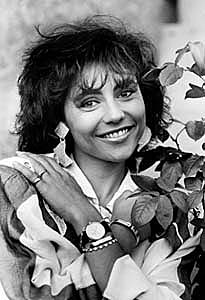
Gubbio is a town and comune in the far northeastern part of the Italian province of Perugia (Umbria). It is located on the lowest slope of Mt. Ingino, a small mountain of the Apennines.

Chiavari is a town in the Metropolitan City of Genoa, northern Italy. It has about 28,000 inhabitants. It is situated near the mouth of the river Entella.

Dominic Loricatus, O.S.B. Cam., was an Italian monk, born in the village of Luceolis near Cantiano. His father, seeking social advancement, paid a bribe to have him ordained a priest when still a child. When he discovered the fact, he resolved on a life of penance and became a hermit in the woods near the abbey of S. Emiliano in Congiuntoli, then a Camaldolese monk at the monastery of Fonte Avellana in 1040.
EUGEN - EUropean Geosciences students Network is youth organization based in Germany. Main goal of EUGEN is organizing annual summer camps for students in geo-sciences all across Europe. The EUGEN was created in summer 1995 during the national meeting of German geology students. First summer camp was held in August 1996 in Black Forest in Germany with participation of 120 students from 18 European universities. Since then every August is held EUGEN meeting every time on different location in Europe and last for one whole week. The program schedule usually contains three days reserved for geological fieldtrips, organized by the local hosts in league with their university professors and/or national geological survey. One day is reserved for some sightseeing-trips to interesting local destinations. Talks and presentations from members of participating universities and supporting organizations are also part of the program. The tradition calls for one afternoon dedicated to the famous Geolympix - a team competition in highly entertainable fun-sport games. On every EUGEN meeting the contest for next EUGEN meetings are held. The countries that nominate themselves make presentations and participants vote for the winner. The next EUGEN meeting will be held in Austria.

The Duchy of Urbino was a sovereign country in central-northern Italy.

Frontone is a comune (municipality) in the Province of Pesaro e Urbino in the Italian region of Marche, located about 60 kilometres (37 mi) west of Ancona and about 45 kilometres (28 mi) southwest of Pesaro.

Scheggia e Pascelupo is a comune (municipality) in the Province of Perugia in the Italian region Umbria, located about 40 km northeast of Perugia. The municipal seat is located in the main village of Scheggia, just below Scheggia Pass on Route SS/SR 3, following the ancient Via Flaminia.

Felice Damiani or Felice da Gubbio (1530-1608) was an Italian painter of the late-Renaissance or Mannerism period.
Francesco Allegrini da Gubbio (1587–1663) was an Italian painter of the Baroque period. His children, Flaminio and Angelica Allegrini, were also painters. Angelica painted a canvas for the church of San Francesco, Gubbio.
The Grand Italian Trail is a 6166-kilometer-long hiking trail that crosses the entire national territory of Italy.

Lolita Laura Morena is a Swiss model, actress, and television hostess.
Cante dei Gabrielli di Gubbio was an Italian nobleman and condottiero.

Giuseppe Capponi was an Italian operatic tenor who sang leading roles both in Italy and Europe. He is most remembered today as the tenor soloist in the world premiere of the Verdi Requiem.
Antonio II da Montefeltro (1348–1404) was an Italian condottiero and count of Urbino.

William Montagu Hay, 10th Marquess of Tweeddale KT, known before 1878 as Lord William Hay or Lord William Montagu Hay, was a Scottish landowner, peer and politician. He was born at Yester House, near Gifford, East Lothian, and served in British India as a member of the Bengal Civil Service and later as a Liberal Member of Parliament.

Antonio Concioli was an Italian painter, mainly depicting sacred subjects in a Neoclassical style.

Giovanni Maria Baldassini was an Italian painter of the late Renaissance period.
Ventura Mazza or Mazzi or Marzi or Mazi or Magi was an Italian painter of the late-Renaissance.
The Burano is a river in the Umbria and Marche regions of Italy. Its source is in the province of Perugia in the Appennino Umbro-Marchigiano mountains. The river crosses the border into the province of Pesaro e Urbino and flows north near Monte Catria, Cantiano, Monte Nerone, and Cagli before entering the Candigliano at Acqualagna.














